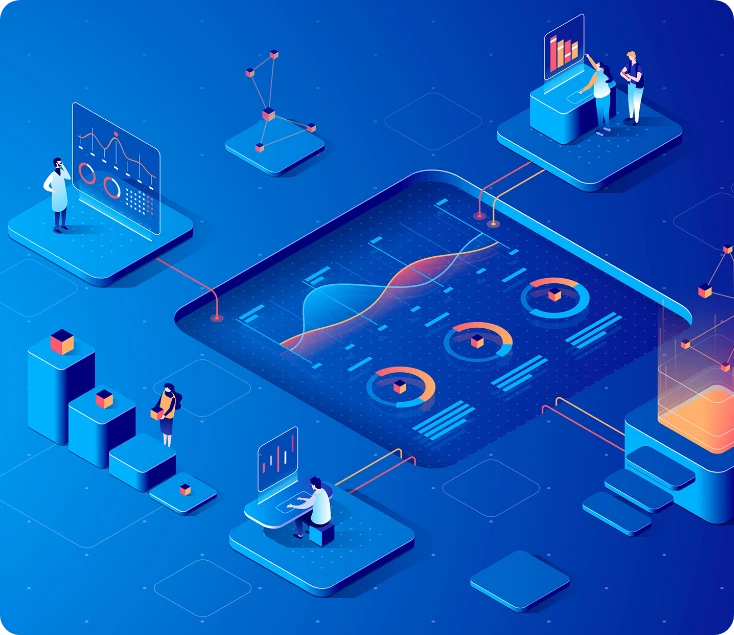Microsoft End of Support

End of an Era: Goodbye Windows 10 after 10 years!
- After being launched in July of 2015, Windows 10 will be officially shutting down on October 14, 2025.
- This means Microsoft will no longer offer security updates, technical support, or patches for the longstanding operating system.
What does End of Support (EOS) Mean?
After October 14, 2025, computers running Windows 10 will still function, but Microsoft will no longer provide the following:
- Technical support of any issue
- Software updates, patches
- Security updates or fixes
- Additional Features
- While you could continue to use a PC running Windows 10, without continued software and security updates, your PC will be at a greater risk for viruses and malware.
What Are Your Options?
Upgrade to Windows 11 – If “Ready” Device
Replace
with New Windows 11 PC
Purchase Extended Security Updates (ESU)
(short-term mitigation only)
You’ve got Q’s, here’s the A’s
Will my Windows 10 computer stop working?
No. Support for Windows 10 is discontinued, but the software will continue to function. However, after October 14, 2025, your computer running Windows 10 will no longer receive security updates.
Will my Microsoft 365 Apps be supported when Windows 10 reaches end of support?
Support for Microsoft 365 Apps on Windows 10 will end on October 14, 2025, when Windows 10 reaches end of support. Although these applications will continue to run on Windows 10, we strongly recommend upgrading to Windows 11 to avoid performance and reliability issues with using those apps over time.
Automated FREE Windows 11 Upgrades from Centaris:
Centaris will remotely push upgrades twice free of charge
Devices must be powered on and online
Laptop Lids must be left up
Failed upgrades will trigger a support ticket
Remediation is billable under your support agreement
Business Benefits of Acting Now
Maintain security and compliance
Minimize business disruptions
Improve performance and user satisfaction
Product availability
Risks of Doing Nothing
Increased exposure to ransomware and zero-day attacks
Non-compliance with regulations
Cybersecurity Insurance claims may be denied
Possible business disruptions
Sample Migration Timeline
Q3 2024
Inventory & Assessment
2024
Q4 2024
Procurement & Planning
2024
Q1-Q3 2025
Upgrades & Deployments
2025
Q4 2025
Decommissioning Windows 10
2025
Official Statement Per Microsoft:
Starting Oct. 14, 2025, Windows 10 will no longer receive security updates. As security threats evolve and adapt,
so must our operating systems and hardware. Because of this, Windows 11 was designed to be the most secure
version of Windows ever — by default and design — to help you stay ahead of those risks.
Windows 11 Security Features
Hardware-Based Protection
with TPM 2.0
Windows 11 requires a Trusted Platform Module (TPM) 2.0 chip, which securely stores encryption keys and helps prevent tampering or unauthorized access to sensitive data.
Enhanced
Authentication Methods
Includes biometric login with Windows Hello, multi-factor authentication (MFA), and support for passwordless sign-in— improving identity protection and access control.
Virtualization-Based
Security (VBS)
VBS uses hardware-assisted virtualization to isolate critical system processes, making it harder for malware to compromise the operating system. It’s enabled by default in Windows 11.
Built-In Phishing
Protection
Microsoft Defender SmartScreen and Microsoft Edge help detect and block phishing websites and malicious downloads, reducing the risk of credential theft.
Credential Theft &
Malware Defense
Defender Credential Guard and other features help block attempts to steal or misuse login credentials, while realtime threat protection defends against malware and ransomware.
Resilience Against
Persistent Cyberattacks
By combining all these tools, Windows 11 adds multiple layers of security that make it more resistant to common and advanced attacks targeting users and devices
An upgrade that feels like an update—
and is easy to deploy and manage
Windows 11 is built on the consistent, compatible, and familiar Windows 10 foundation you know—and you remain in control.
We’ll plan for, prepare, and deploy Windows 11 just as we do today with Windows 10.
Upgrading to Windows 11 is similar to taking a Windows 10 feature update. And you can get started now with Windows Update for Business with eligible devices.